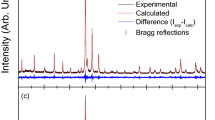The superconducting properties of copper ternary alloys containing small amounts of vanadium and silicon have been investigated. The wire samples of three alloys—Cu90V7.5Si2.5, Cu88V9Si3, and Cu84V12Si4—show a resistive superconducting transition around 17 K, the characteristic transition temperature of the A15 compound V3Si, followed by a plateau and a second transition between 5 and 10 K. The resistivity, however, does not drop to zero down to 2.5 K. The maximum drop in resistivity is observed for the alloy containing minimum amounts of vanadium and silicon. Complete super-conductivity is absent in these alloys for two reasons. First the effective superconducting volume fraction in these alloys is well below the threshold value obtained by either the effective medium theory or the site percolation theory for solid conduction. Second, the superconducting phase does not precipitate in a fine structure in the matrix and a strong proximity effect does not operate. Experimental evidence confirms the formation of brittle phase V3Si in the cast alloys which does not get elongated to the same extent as the matrix when rolled or drawn. This reduces the effective volume fraction of V3Si in the drawn wires. Annealing of these wires causes the superconducting particles to coalesce and grow in size, increasing the interparticle distances to the detriment of superconductivity in these alloys.
Similar content being viewed by others
References
C. C. Tsuei, Science 180, 57 (1973).
C. C. Tsuci, M. Suenaga, and W. B. Sampson, Appl. Phys. Lett. 25, 318 (1974).
R. G. Sharma and N. E. Alekseevskii, J. Phys. D 8, 1783 (1974).
J. P. Harbison and J. Bevk, J. Appl. Phys. 48, 5180 (1977).
A. Nagata, O. Izumi, K. Noto, and H. Hirayama, J. Mat. Sci. 13, 731 (1978).
R. Bormann, L. Schultz, and H. C. Freyhardt, Appl. Phys. Lett. 32, 79 (1978).
R. Roberge, S. Foner, E. J. McNiff, Jr., and B. B. Schwartz, Appl. Phys. Lett. 34, 111 (1979).
A. Nagata, H. Hirayama, K. Noto, and O. Izumi, J. Appl. Phys. 48, 5175 (1977).
M. Hensen, Constitution of Binary Alloys, 2nd ed. (McGraw-Hill, New York), p. 582.
A. Davidson and M. Tinkham, Phys. Rev. B 13, 3261 (1976).
Scott Kirkpatrick, Rev. Mod. Phys. 45, 574 (1973).
V. K. S. Shante and Scott Kirkpatrick, Adv. Phys. 20, 325 (1971).
R. Zallen and H. Scher, Phys. Rev. B 4, 4471 (1971).
C. C. Tsuei and L. R. Newkirk, J. Mat. Sci. 8, 1307 (1973).
R. Roberge and J. L. Fihey, J. Appl. Phys. 48, 1327 (1977).
J. D. Livingston, J. Mat. Sci. 12, 1759 (1977).
C. J. Lobb, M. Tinkham, and W. J. Skocpol, Solid State Comm. 27, 1273 (1978).
Author information
Authors and Affiliations
Rights and permissions
About this article
Cite this article
Sharma, R.G., Krishna, M.M. & Narlikar, A.V. Superconductivity in Cu-V-Si alloys. J Low Temp Phys 40, 105–115 (1980). https://doi.org/10.1007/BF00115985
Received:
Issue Date:
DOI: https://doi.org/10.1007/BF00115985




